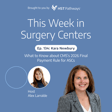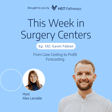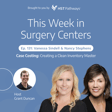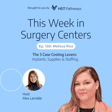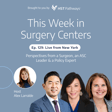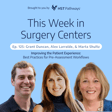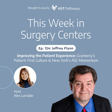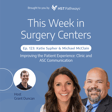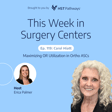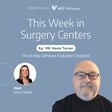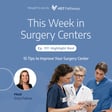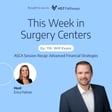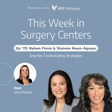
Bruce Johnstone – Expanding Your ASC: Adding an OR
Today is part two of a three-part podcast series on Expanding Your ASC. As we learned in the last episode, expansion will look different for every surgery center. However, whether adding physicians, introducing a new specialty, opening another OR, or growing your team, having a growth mindset is essential for your surgery center's longevity. So today, we are sitting down with Bruce Johnstone, a Principal at Apex, and he's sharing great advice on how you can successfully add a new OR to your facility.
After my conversation with Bruce, we'll switch to our Data & Insights segment. Last September, HST released a State of the Industry Report with 45 chapters of best practices, 125+ KPIs for ASCs to track, and free benchmarking data for 15 key metrics. We are currently working on a 2024 version, so in honor of being two months out from our publish date, I want to share with you four of the key metrics we published last year and talk through how to improve them.
Dive deeper into the KPIs:
Average Net Revenue Per Specialty
Patient Deposit Collection Rates
2023 State of the Industry Report
Brought to you by HST Pathways.
